The wind began to move as I had never seen it before, swiftly pulling us forward before lifting us into the air by mere inches, and blowing us back. There was nothing the rowers could do to turn us away as our vessel was twisted and tossed like a mere toy— until we saw it. A great circular waterfall, in the middle of the sea— falling into a great hole. Within it, defying all I knew about the world, stood an incomprehensible landmass.Roog'alhiik is a region scarce few humans ever see, yet alone enter. It is a land of complete mystery that flies in the face of everything that should be possible. It shouldn't exist, and yet it defiantly continues to do so.
A Surreal Landscape
It's growing! It's growing! Two-hundred years ago it took three days longer to reach that cursed hole by sea than it does today! Three days!At the very top of Roog'alhiik's stem, rising over the waves and sputtering smoke into the sky, sits Ig'laxil— the furnace. Here, the stem widens again and splits into two tubes of what appear to be bronze. One acts as a giant sconce, with an eternal blue flame dancing and flickering as if the wild winds around it weren't there— and even stranger, the flame does not emit smoke of its own. Instead, the second tube, rising higher into the air than the first, appears to emit the smoke one would expect to rise from the great flame— despite the fact that it connects to the stem at a point below Ig'laxil.
Leaves of Stone and the Unkown
Paeyiik
The land that turns.Paeyik is a mountainous region made of extraordinarily hard stone, accompanied by rolling hills. In the east, the land flattens within a dead zone known as Yaeshing. Yaeshing is littered with holes, and appears more and more membranous the closer one gets to its center. However, if one were to travel its entire length— they would find themselves walking upside-down, underneath Paeyiik. Seemingly empty settlements dot its landscape— as if they were geographical features of their own.
T'xij
The land that melts.T'xij is constantly in a state of melting and growing. Its mass of mint-tinted stone emanating in the northeast and sloughing off the closer it gets to the stem in the southwest. Rather than causing a dramatic splash when land drips into the water below, it instead passes through the ocean and travels somewhere unseen below the ground— as if it were nothing but air. The Iyshigik people, who call T'xij home, have created a massive structure— the Walls of Xigik— that maintains the land's solid state for longer periods of time.
Yuugot
The land that tears.Yuugot is occupied by few— as a great golden filigree embedded within it seeks to rend all life upon the arid wastes into nothing but dust. In fact— the stone here is not stone at all, but the crushed remains of travellers solidified by unknown means. Despite this, the nomadic Jut'k people who call it home have accepted their deaths— and live short lives worshiping the serpentine metal. There is another object of worship here, too— in the southwest, upon a mesa of flesh, rests a captive star.
Spy'g
The land that sews.Spy'g has been sewing and breaking itself apart for untold aeons, its geography is a twisted patchwork of what once was. A great needle threads itself through slowly, but the Ool'ol'gahool who live in Spy'g perceive time almost as slowly— and the needle is a quick, dangerous threat. Their knotted cities are constantly being destroyed and rebuilt as a consequence. They are one, a hivemind of plant-like stone tendrils that weave through the land and knot together to form settlements.
Near Isolation
A hostile homeland
The Jut'k carve out a nomadic lifestyle among the bone-dust beneath their feet. Yuugot is unkind to its occupants, as if they were but fleas on the back of a great beast— the filigree embedded within lashes out at incredible speeds to tear them apart. As the land is made from the bones and viscera of their ancestors, they feel forever connected to it, and remain there— constantly moving from place to place. Nothing grows upon the arid landscape, and they are one of only three living species that inhabit it— they are lucky that their physiology requires no water. As a result, they cannot farm the land, and they cannot reliably find herds of the Giil'ant beasts that can satiate their hunger. The ground beneath them was alive once, however. It retains some nutrients, more so around fresher remains— and so they resort to cannibalism to survive. Sucking on the dust around them, mixing it with spit and cooking it with the profane flames that emit from their hides.A trembling foundation
From time to time, a great and terrible wind will gust from beneath Roog'alhiik— shaking its leaves vigorously despite the branches beneath them refusing to bend to the wind's will. Ig'laxil burns furiously, growing to twice it's size, and Roog'alhiik seems to grow just a bit more. Those living in Paeyiik believe that the world around them is shaking rather than the land beneath their feet— as the Paeyiik's strong gravity keeps them still despite its erratic movements. Great wads of T'xij drip from its edges, and its landscape is altered dramatically as it shakes to and fro. Those living outside the great walls are often crushed or sunk into the churning landscape. The Jut'k celebrate this event, as it is the one period of time where the great filigree ceases its hunt. The Ool'ol'gahool experience this period for longer than all else— it'd be agonizing if their bodies were not rooted into the ground beneath them, but instead it is no more than a curiosity.Roog-ahl-heek
A unique climate
The climate of Roog'alhiik is entirely unique to itself, weather patterns within are seen nowhere else in Qet. Rain, for example— clouds do not darken above the strange lands. Instead, the calm water below begins to ripple and shimmer— before water begins to fall upwards from it. This water collects in a large pool above, before spraying down in a fine mist. Wind is entirely unpredictable, especially in the surrounding waters where it is most powerful. This is yet another of many compounding obstacles for explorers seeking to enter the strange land, as their ships are tossed about like mere toys. While less powerful inside the hole, these winds continue to change directions without warning— in any direction. On occasion— typically during hurricane season— there are very brief moments where these winds pick up greatly, changing from a mild nuisance to an outright danger.Outside of the constant winds, magic, and other anomalies— the average temperature within Roog'alhiik is a mild 75 degrees Fahrenheit. While the world around them— even the immediate ocean— changes through the seasons, Roog'alhiik does not, defying the powers that be. Almost as if it were a small child mocking them.
The Iyshigik Empire
The Iyshigik Empire is the strongest nation within Roog'alhiik, as they are the only ones able to travel between leaves. Their powerful eldritch magics allow them to demand tribute from the other nations throughout Roog'alhiik, some even see them as gods— having never witnessed another sapient species in their histories, let alone magic. Despite very well being able to— they have not conquered or taken any land for themselves outside of their own leaf, T'jix. Instead, they merely take the other nations as tributary states, on occasion taking the best and brightest of their civilizations to graft onto their Szayik or Mind priest— the head of their faith, an amalgamate mind.Parasite
Roog'alhiik is not, in fact, native to Qet. At least not in the traditional sense. It was born from Qetlon's death, yes, but it was never truly part of their body. Roog'alhiik was and is a celestial parasite, one that gestated within Qetlon's stomach. Only in this sense can it claim the dead god as its parent, but it never was. And it continues to feed from the remains of its former host. Perhaps this relationship is a symbiotic one— but it is impossible to know whether or not Roog'alhiik will ever cease its slow, steady growth.Notable fauna
In the Yogth lake of Paeyiik, a strange species of bipedal marbles run along the lakebed. The elegantly patterned red-yellow glass that makes up most of their rounded bodies implies that they were perhaps created rather than naturally born here. It is believed that the P'aatog ruins on the lake's western shore may have been their origin, either where their long-dead masters forged them— or shrugged off civilization to become them.Within Yuugot, there lives only one non-sapient, edible, species— the giil'ant. These hulking squid-like masses of fleshy tendrils and teeth roam the land aimlessly, dragging themselves along with one particularly large tendril with surprising speed. It is unknown what they consume for sustenance or if they even need any to begin with. The great filigree above makes sure that none can be quite sure of their lifespans.

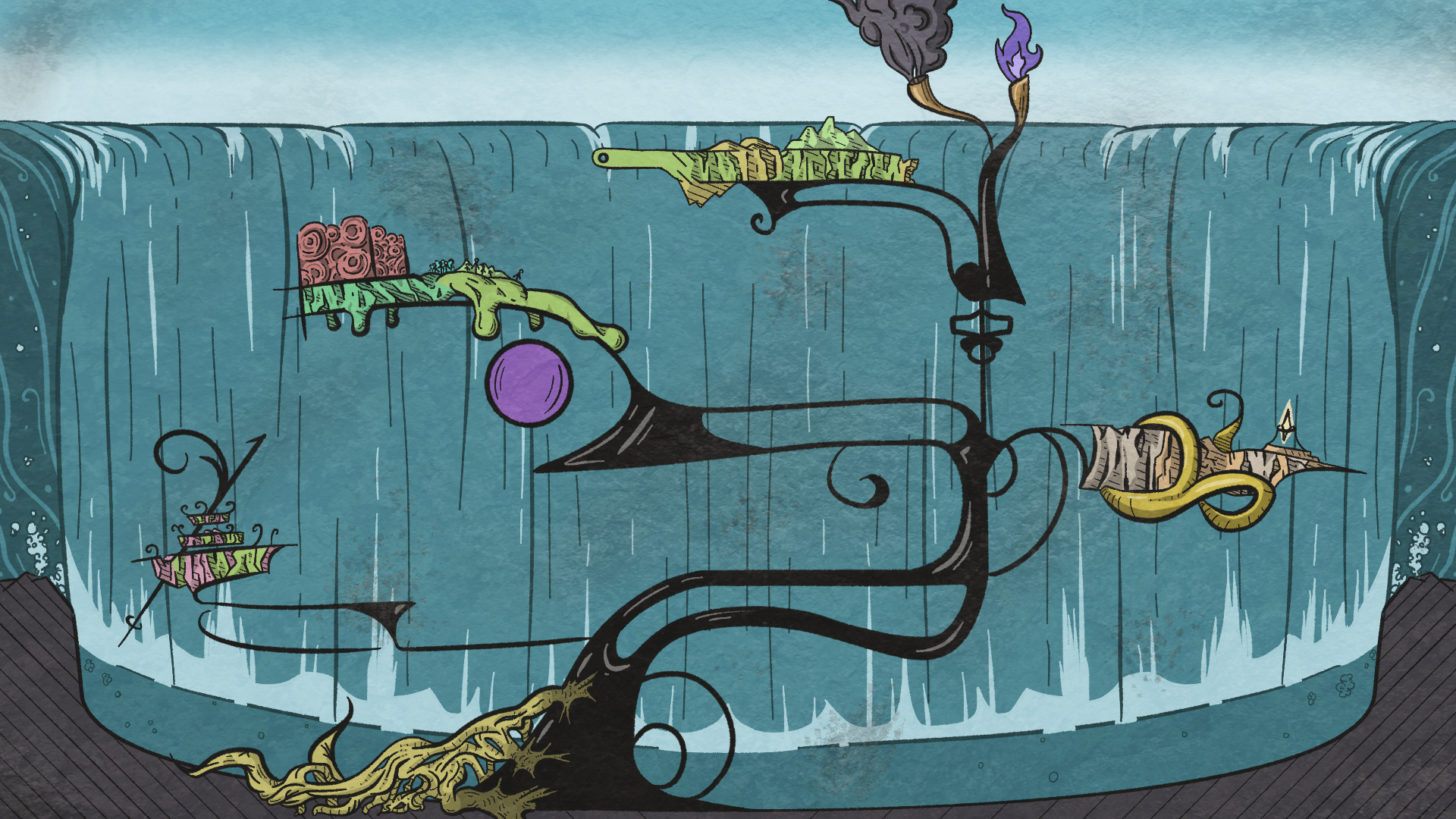


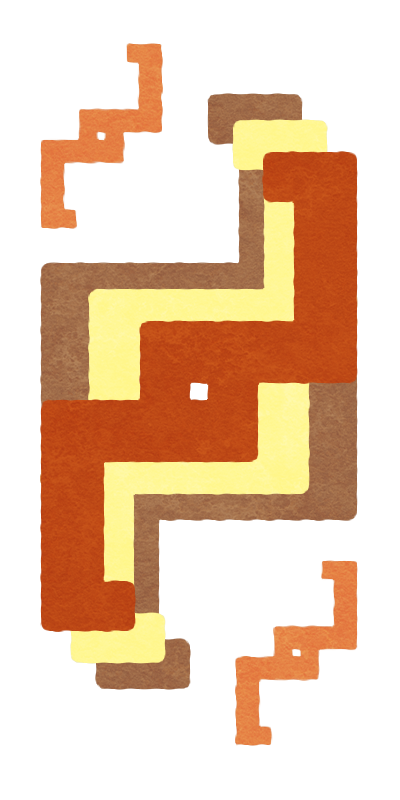
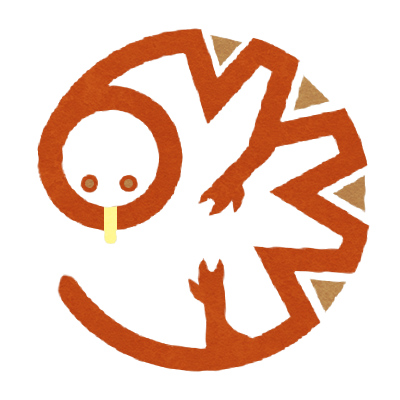

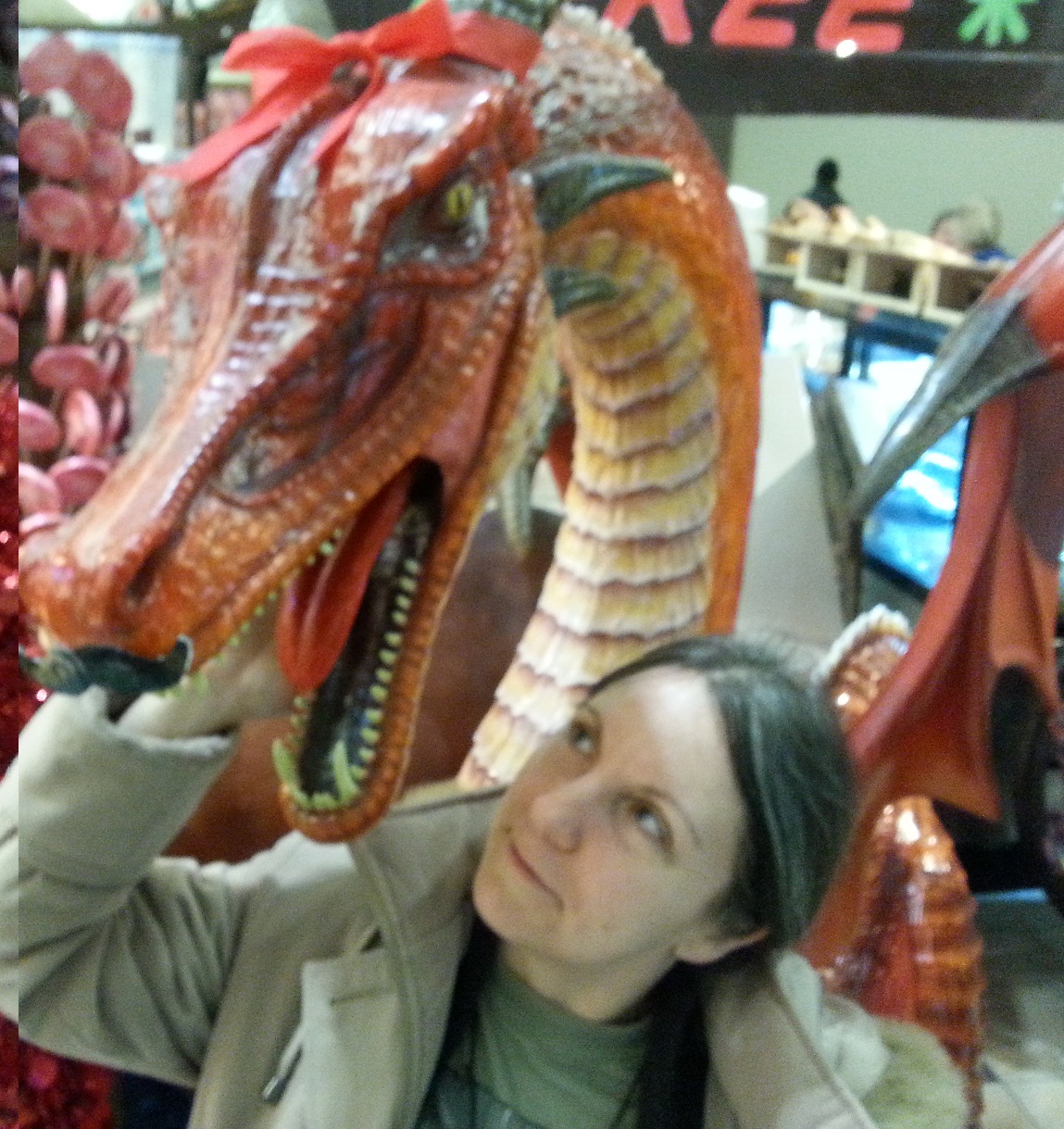

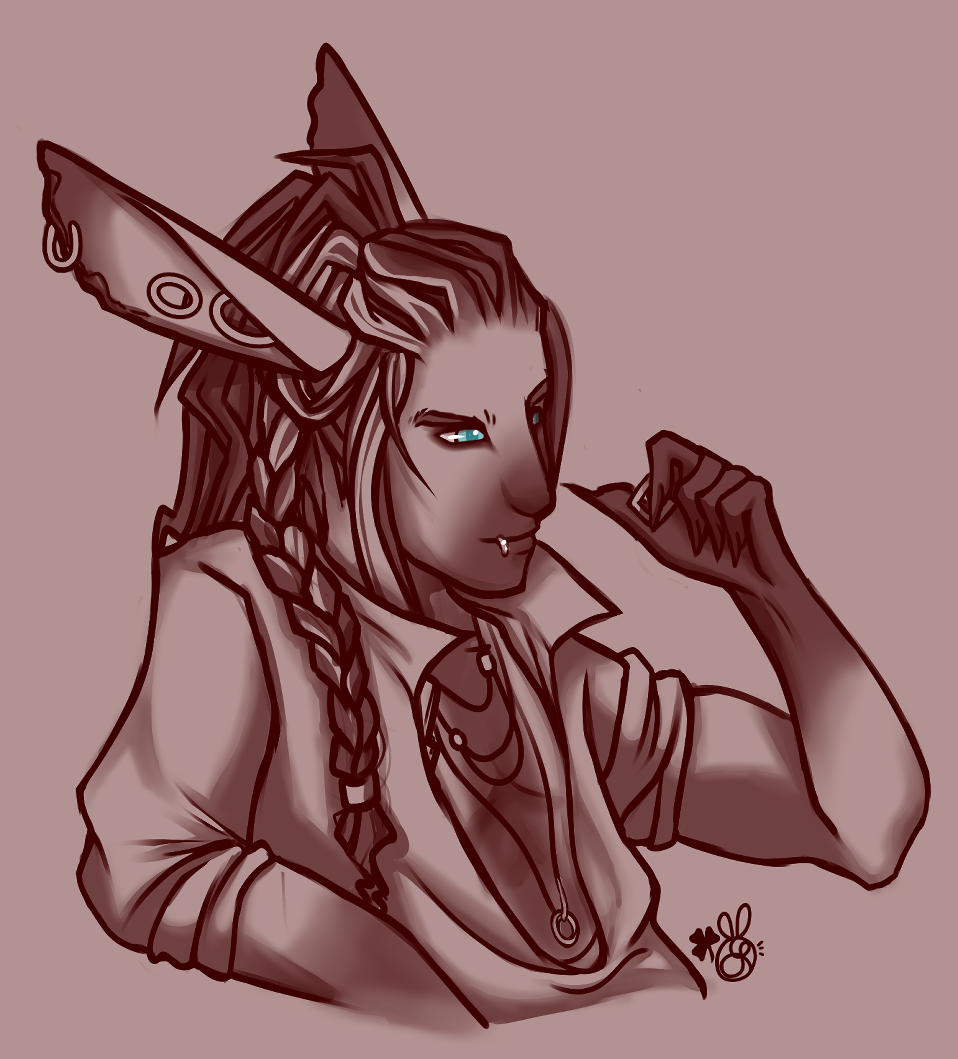


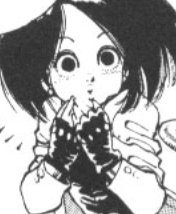
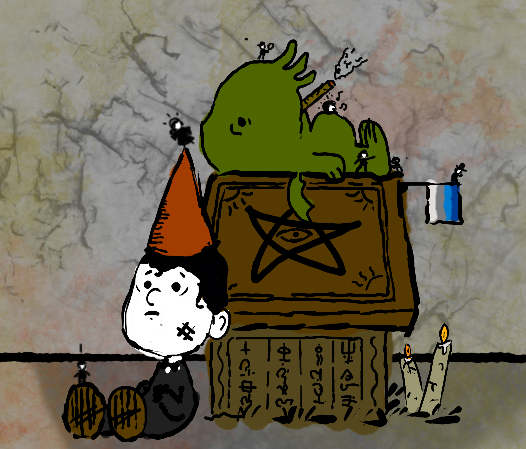
I just have to say that this article pleases my eyes. Your articles are always pretty and this one is no exception. You have an amazing grasp on how to use layout to make an article even more intriguing! Your illustrations are wonderful as always. I love that you have multiple maps since it makes sense to have more than one in this case. Amazing work, Timepool!
Thank you!